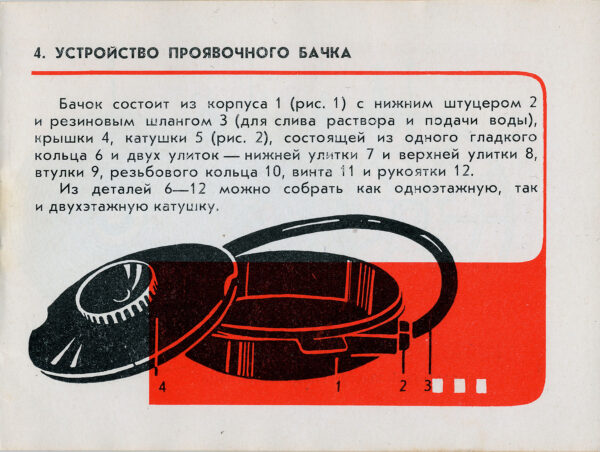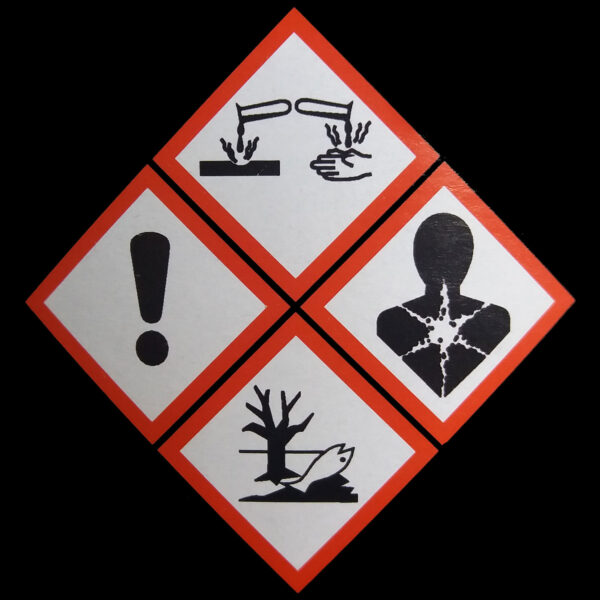Black/white reversal process
This page gives you the basic technical information on how to process your own black&white reversal super8 film.
Everything you do is at your own risk! This receipt is a starting point and experimenting will lead to better results.
Not all chemicals mentioned below are easy to get. Also be very careful if you start mixing the stuff. The chemicals are very bad for your health and increase the risk of cancer!
The principle of reversal film processing is illustrated below. Maybe my translation is not perfect, so if you are a native English speaker and know how to write it perfect, please drop me a line. Much appreciated.
Principle of reversal processing
Exposure of the film.
There will exist an invisible image if you expose the film to light. This is called the latent image. The latent image is the particles with the dot inside.
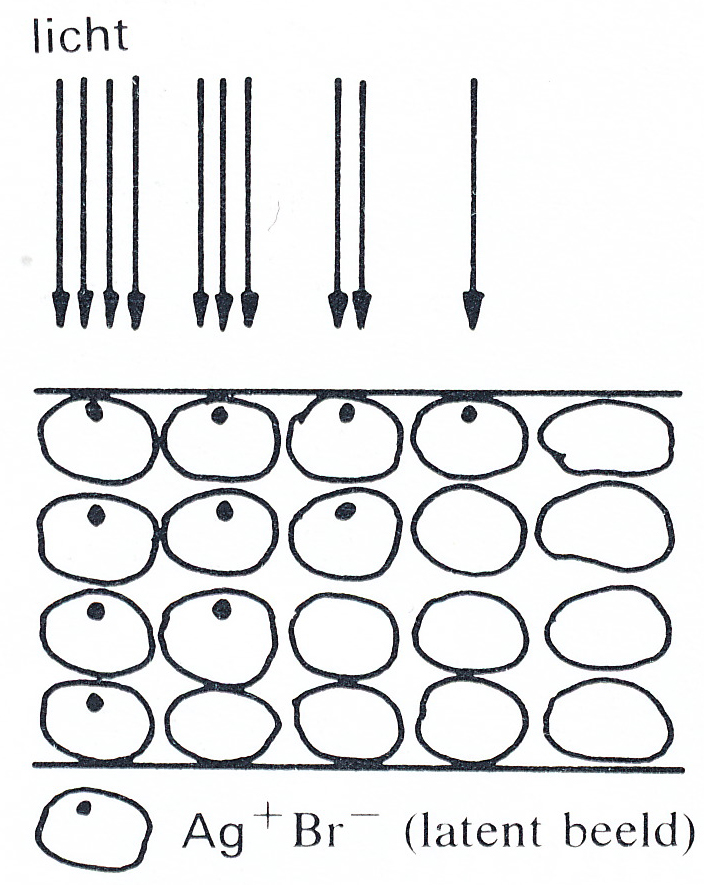
First development.
The latent image is converted by the first developing step into a visible negative image. The rest of the film will stay sensitive to light and remains in the emulsion.
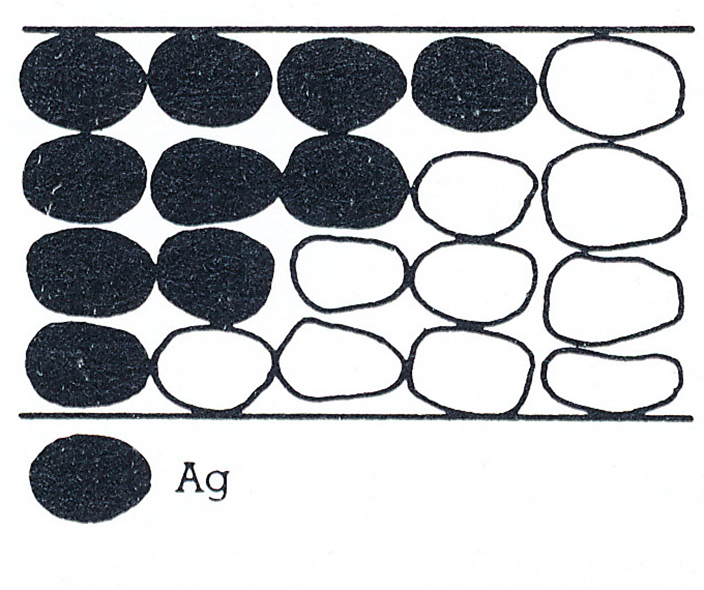
Bleach and Clearer.
The negative silver image (which has been developed) is transformed so it can be dissolved into water. The clearing bath will remove the yellow colour that the gelatine has received by the bleach bath.
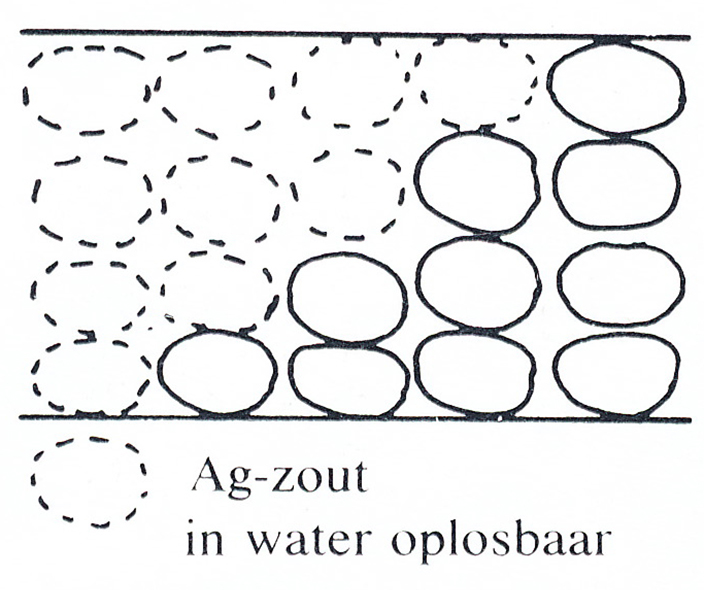
Re-exposure.
The film will now be re-exposed to a diffuse light source. The present silver halides will now be exposed as if it was the first exposure.
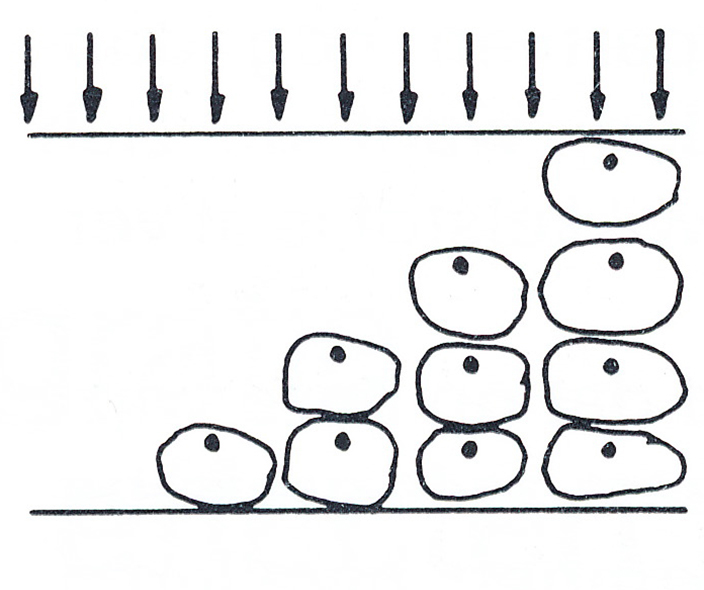
Second developing.
The latent positive image will become visible during this second developing. To remove any of the not developed silver halides you should fix the film.
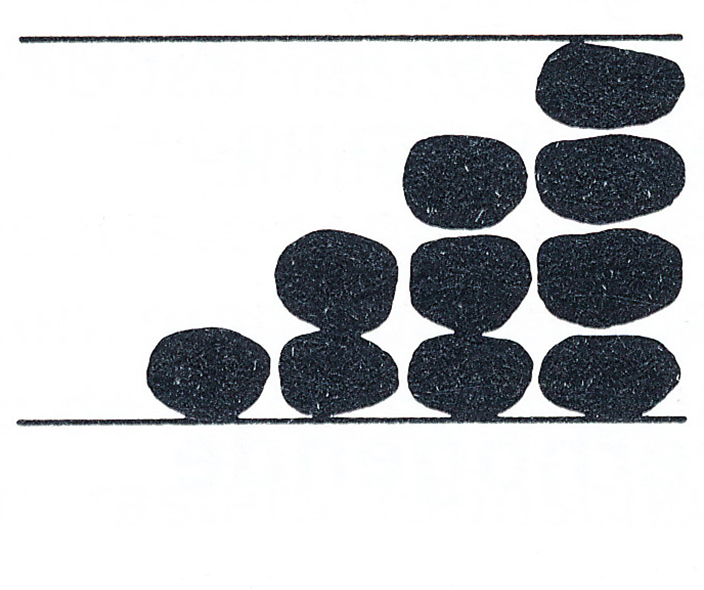
Drawings are taken from the book ‘Principes van de fototechniek deel 1’
During a normal b/w negative process the exposed silver halides are reduced to silver by a developer. The remaining un-exposed silver halides are washed away during the fixing bath. So the image is formed by black silver on the exposed parts.
A reversal process has five steps, after the first developer we follow a different way as you can see above.
If you own a super8 processing tank you will be able to use this processing table for b/w reversal films. All metioned times and temperatures are a good starting point. You should be able to get a decent image if you follow the table. It is more fun to go further than this and experiment and find your own personal b/w recipe. The more you know about the chemistry the more you will be able to tweak every step and every film you make.
Time table b/w reversal
| 1e developer | 6 | minutes |
| rinse with water | 2 | minutes |
| bleach bath | 2 | minutes |
| rinse with water | 2 | minutes |
| clearing bath | 2 | minutes |
| rinse with water | 2 | minutes |
| re-expose (500W at 1 meter) | 1 | minute |
| 2e developer | 3 | minutes |
| rinse with water | 2 | minutes |
| fixing bath | 4 | minutes |
| rinse with water | 10 | minutes |
| dry the film |
The chemistry recipe you read below is for processing b/w reversal films, from any format. Make sure you workspace is clean, has ventilation and is safe. Do not mix chemistry in your kitchen.
Chemical recipe for b/w reversal
| First developer | Dokumol (1+9) from Tetenal or Dukulith (1+3) for a higher contrast. |
| Bleach is made from | Potassium Dichromate K2Cr207 (POISON!l) To make 1 liter:ad 10grams to 400ml warm water. Then add 10ml Sulfuric Acid 96% H2SO4 (BE CAREFUL it can explode) to 400ml cold water. ALWAYS add the sulfuric acid to water and NEVER vice versa because it can explode! Always wear protective clothing like gloves and glasses. Ad the two 400ml solutions together and add water until you have 1 liter. |
| Clearing bath | Sodium Sulfite Na2SO3 (LIGHT POISON) Add 40 grams to 1 liter warm water. |
| Second developer | Every normal film developer will do. For example you could use Dokumol 1+9 or Kodak D76. Advise: use separate developers for the 1e and 2nd developer. |
| Fixing bath | Every normal film and paper fix will do. Like Agfa Agefix 1+7. Follow the instructions from the packaging. |
Warning and disclaimer
Be aware of what you are doing. Everything you do is at your own risk. Consult a chemist in case of doubt. Safety first and don’t let minors touch any of the chemicals. Seek medical help immediately in case of burning or swallowing. The S8RL will not accept any responsibility if something goes wrong or if you end up with damage of any sort.
Photofair
When you want to process your own films you need a developing tank. These are more difficult to get nowadays. You used to buy them from mr. Olexandr Kalynychenko but his website is offline (I can’t find it). New sources are eBay and for Dutch people de Fotografica beurs in Nieuwegein (twice a year, near Utrecht) or www.marktplaats.nl. Be careful when you buy a processing tank, the spiral needs to be in good shape. When you turn it slowly it should be horizontal and straight. So good luck with processing!

